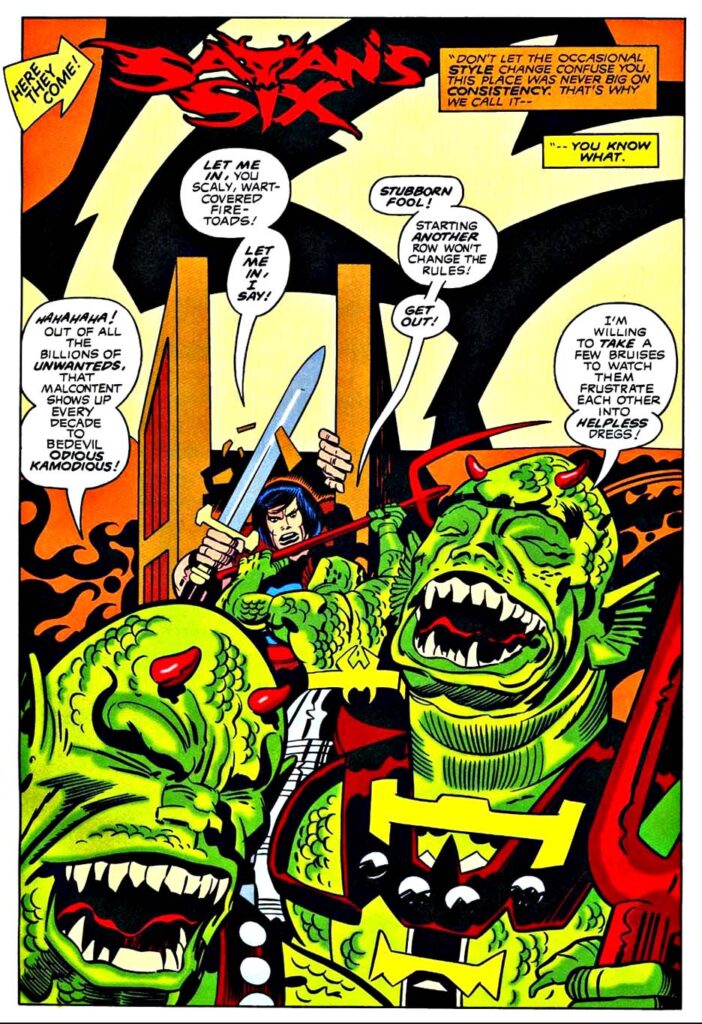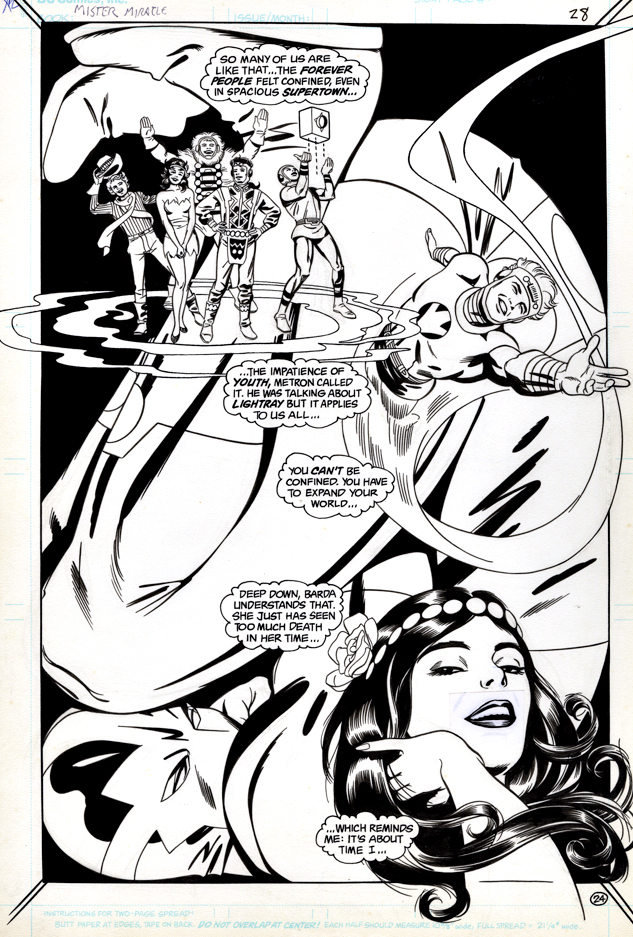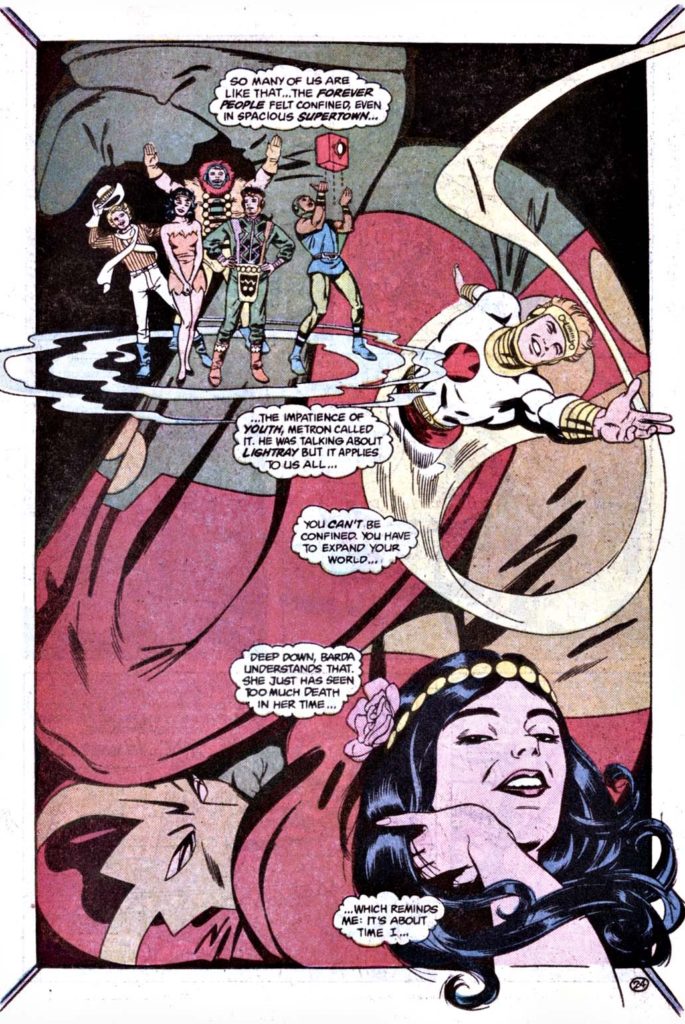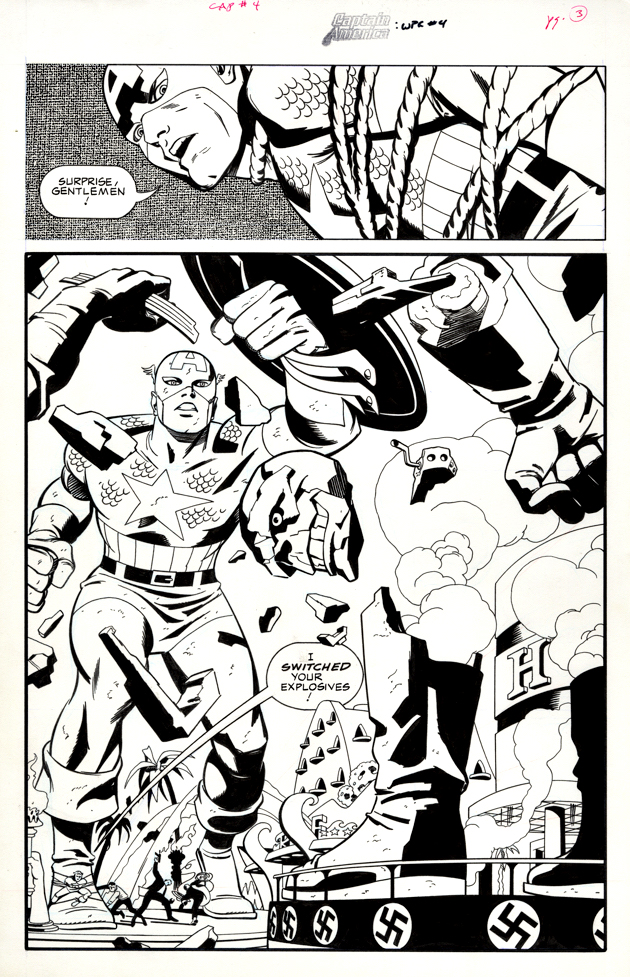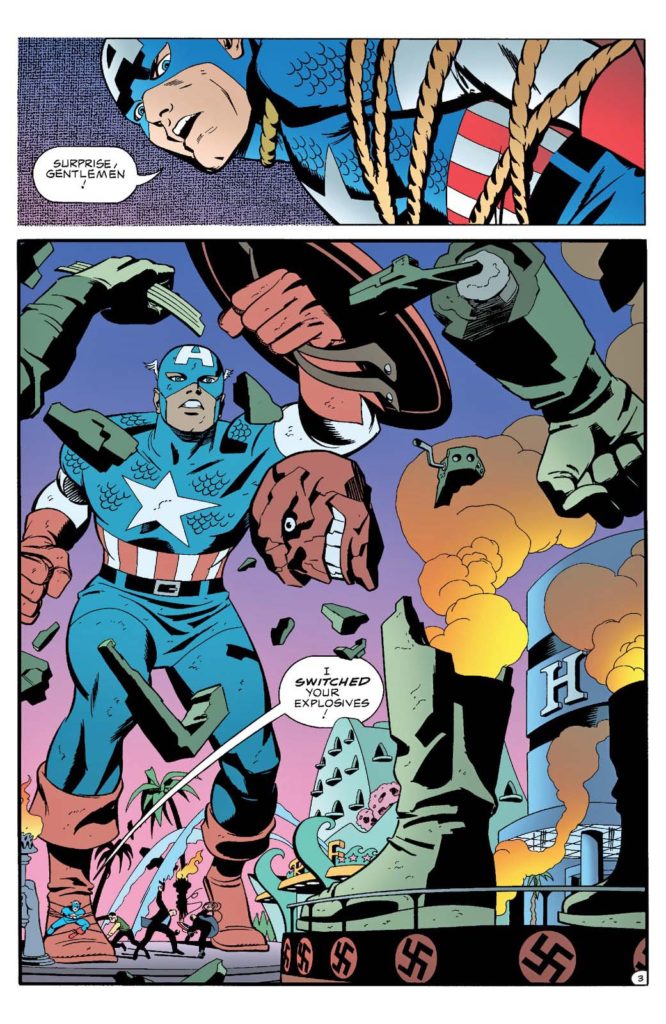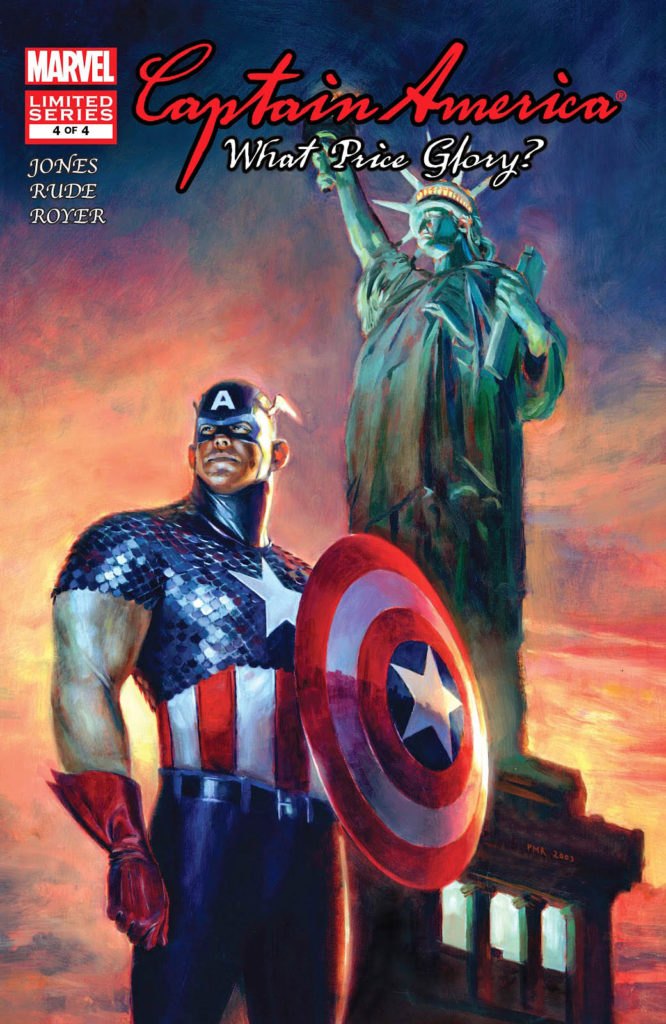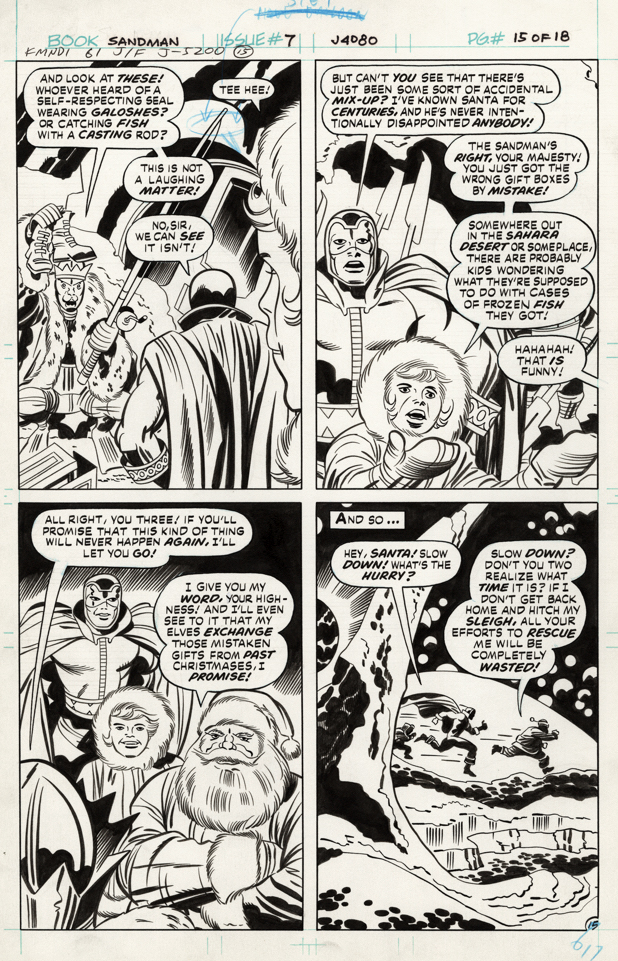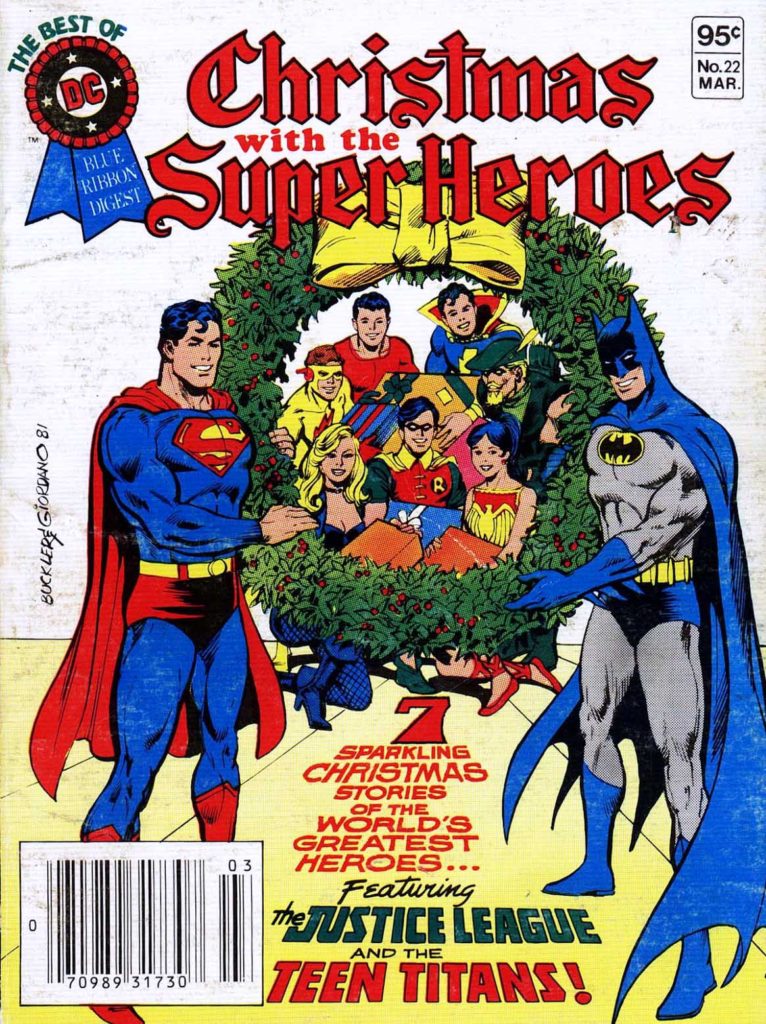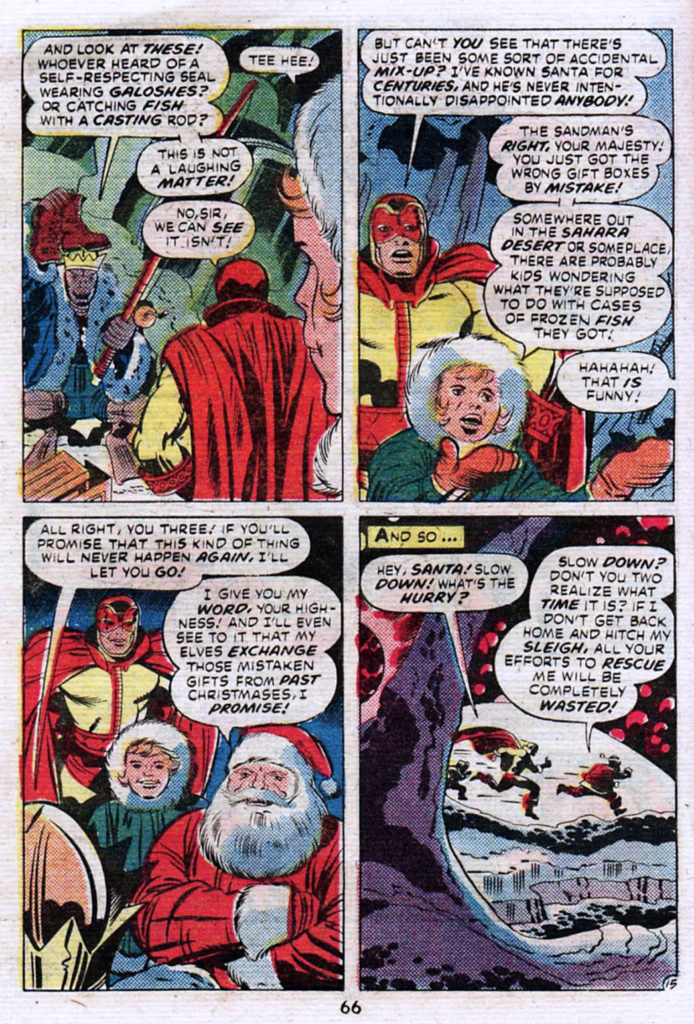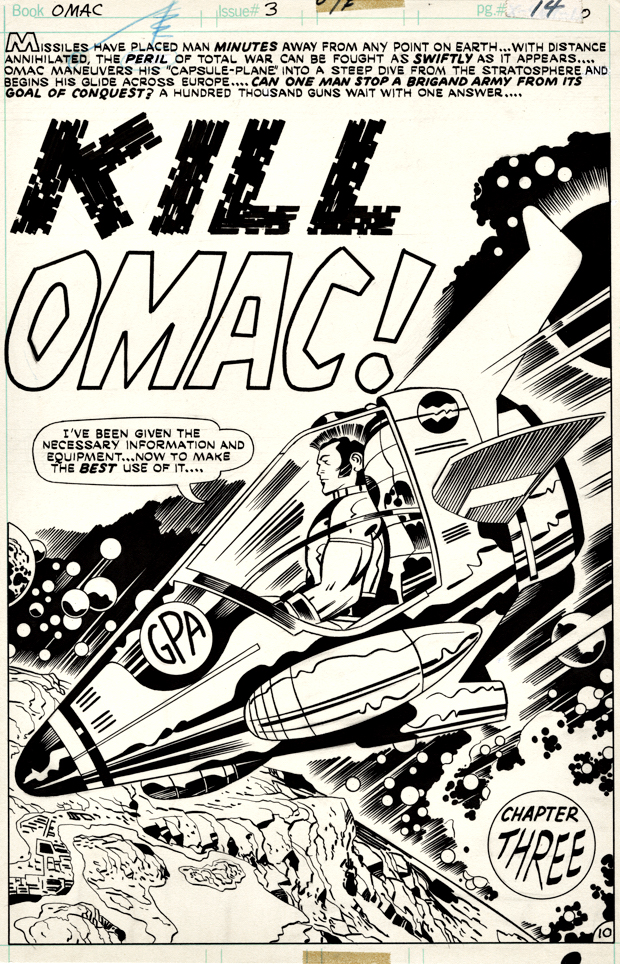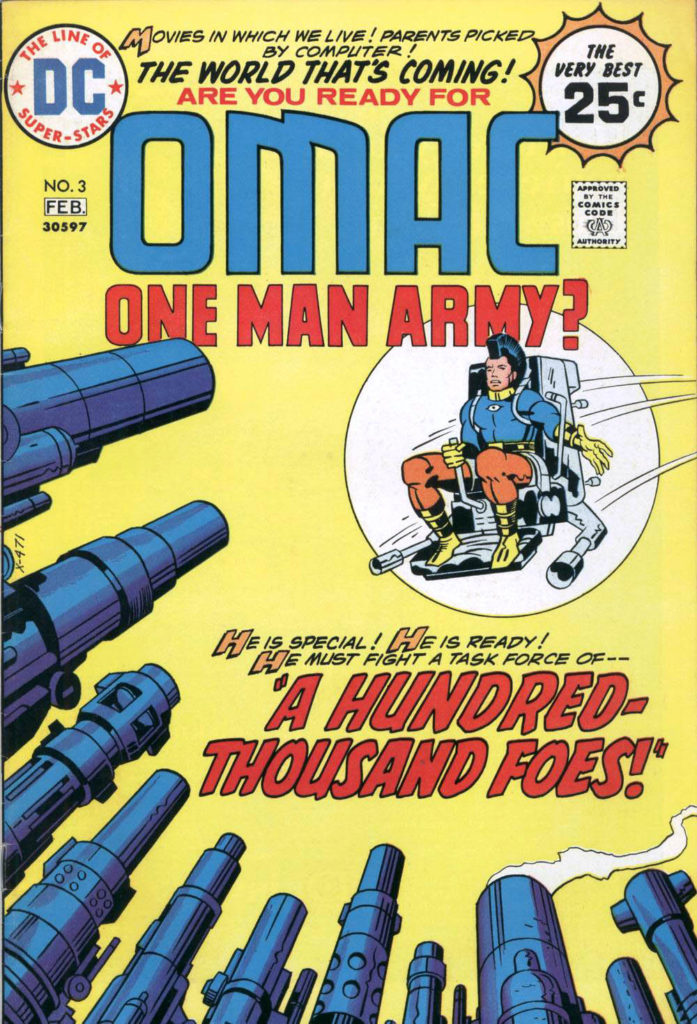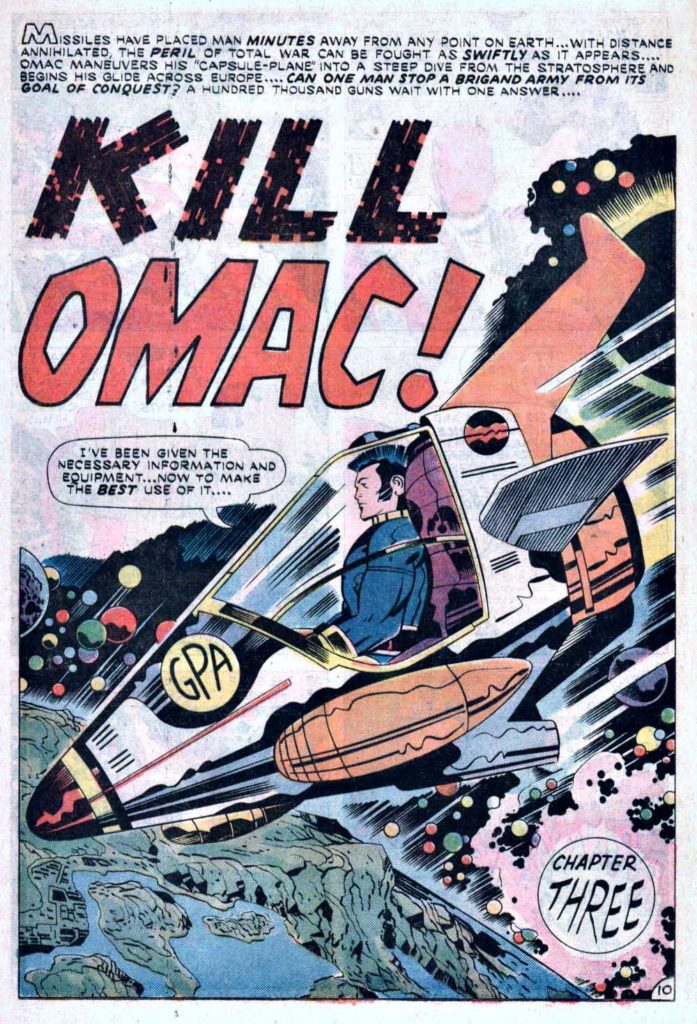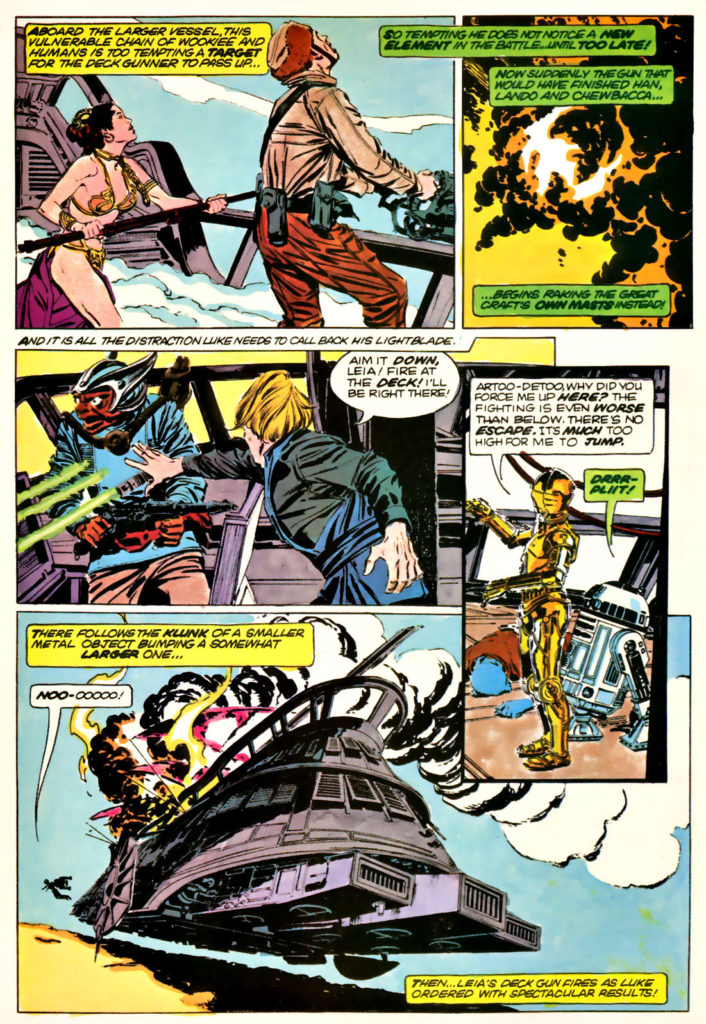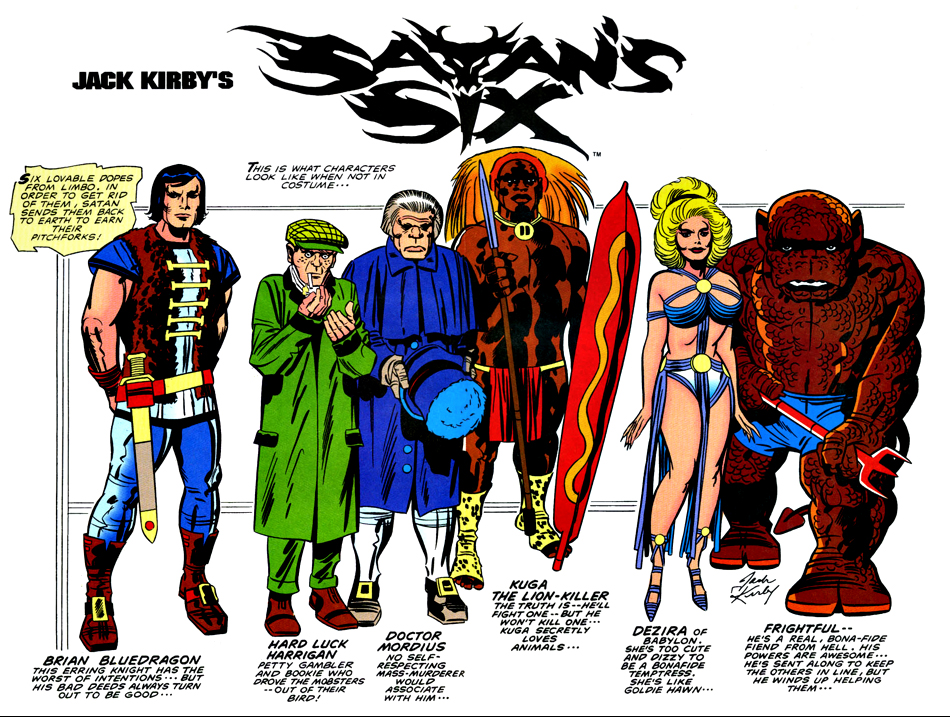Jack Kirby & Mike Royer — 30 Years Ago, Today
Production Art, Satan’s Six #1, April 1993
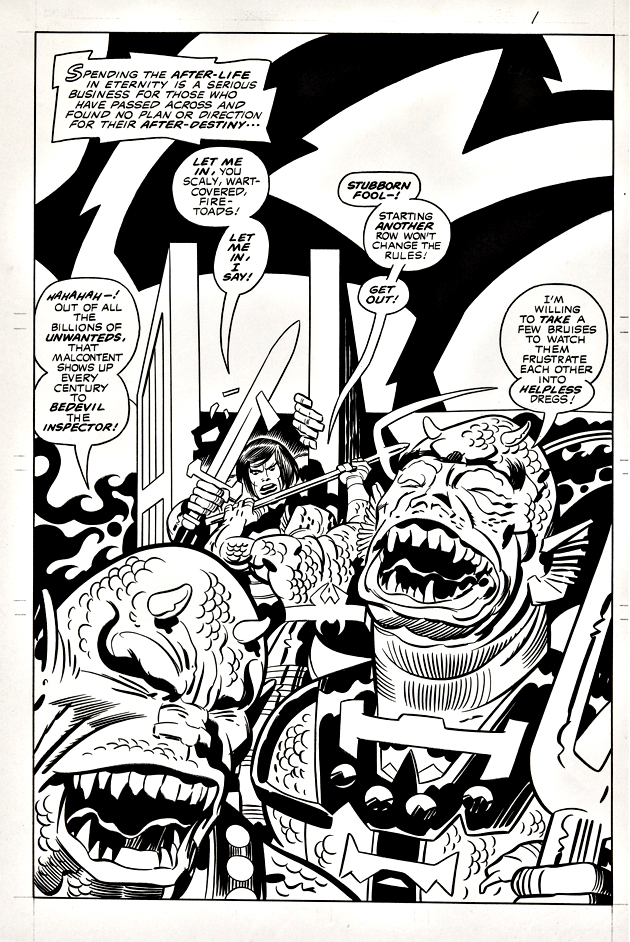
30 years ago? How is this even possible?
Jack Kirby’s Satan’s Six was developed as part on an unrealized “Kirby Line” of comics in 1978, shortly after Jack’s final tenure at Marvel had ended.
Jack drew a cover and eight story pages, plus a character concept and design page. Mike Royer was hired to ink some of those pages as samples, but when the concept for a “Kirby Line” dissipated, the pages sat in a drawer unused for nearly 15 years.
Enter my old home, Topps Comics, the fledging publishing line from the trading card and confectionary giant. Topps signed a deal with Jack in 1992 to produce comic books based on new, and (primarily) previously unused concepts. It was essentially a second chance for a “Kirby Line.” With the King in declining health, however, others would have to create content around Jack’s ideas.
A few years ago, some Kirby production art re-surfaced, complete with the original “Marvel style” trade dress on the cover and Royer’s original inks.
What became of Satan’s Six? Tony Isabella’s stories based on Jack’s high concept of a lovable group of misfits too mischievous for Heaven, but not evil enough for Hell seemed wackily appropriate enough, but the art definitely was a challenge from issue one.
Especially issue one.
Kirby’s eight original pages are scattered throughout the full story with the rest of the art from John Cleary, making for a dizzying juxtaposition of styles.
And Cleary’s “contemporary” (1993) art here, and through the remaining three issues, was simply not enticing enough to sustain interest. The book was cancelled with issue #4. You can read a complete illustrated overview of the series here.
Satan’s Six has yet to return to comics. They remain in… Limbo.
But still…Happy 30th anniversary to the “Kirbyverse!”

